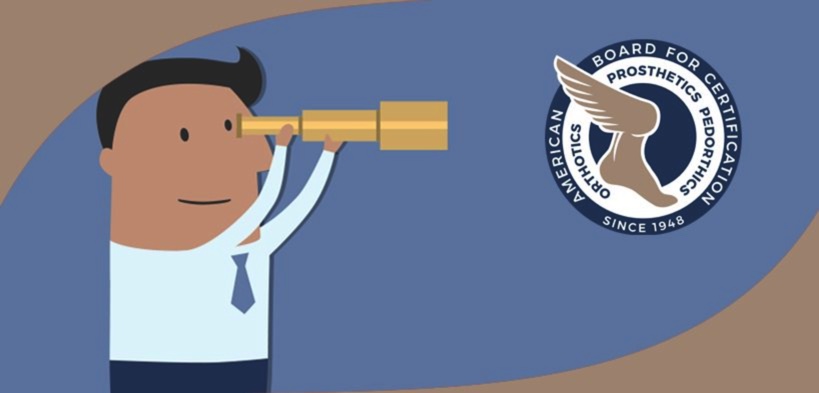Contents
- Patient Evaluation
- Formulation of the Treatment Plan
- Implementation of the Treatment Plan
- Continuation of the Treatment Plan
- Practice Management
©2025 by the American Board for Certification in Orthotics, Prosthetics & Pedorthics, Inc. All rights reserved.
No part of this document may be produced in any form without written permission of the American Board for Certification in Orthotics, Prosthetics & Pedorthics, Inc.
Understanding Your Pedorthist Exam Results
January 2019

Patient Evaluation
If you received your test results for the Pedorthist Written exam only to learn that you did not pass the exam, the following information may help you focus your study for retaking the exam. Your test results notice indicates your score in each Content Domain along with the maximum score in each area. We recommend that you focus your exam study on those Content Domains where you performed the weakest. Below, along with a description of the Content Domain, are sample questions to help you determine the types of questions that you may have missed.
Patient Evaluation
Take a comprehensive patient history, including previous use of a pedorthic device, diagnosis, work history, avocational activities, signs and symptoms and medical history. Perform a diagnosis-specific functional clinical examination of sensory function, range of motion, joint stability and skin integrity. Utilize knowledge of anatomy, muscle functions, normal gait parameters, pathologies and disease processes to guide assessment. Refer patient to other health care providers for intervention beyond pedorthic scope of practice.
The functions of the peroneus longus muscle are:
1. Plantar flexion and inversion
2. Plantar flexion and eversion
3. Dorsiflexion and inversion
4. Dorsiflexion and eversion
The distal aspect of the tibia articulates with the:
1. Calcaneus and fibula
2. Calcaneus and talus
3. Talus and fibula
4. Talus and navicular
The cuboid bone is located on the:
1. medial aspect of the foot
2. lateral aspect of the foot
3. dorsal aspect of the foot
4. plantar aspect of the foot
The plantar aponeurosis extends distally to the:
1. metatarsal heads
2. shafts of the metatarsal bones
3. midtarsal joints
4. proximal phalanges
At initial contact the body weight line is:
1. Anterior to the ankle and posterior to the knee
2. Posterior to the ankle and posterior to the knee
3. Posterior to the ankle and anterior to the knee
4. Anterior to the ankle and anterior to the knee
A gait disturbance characterized by ambulating on the heels due to weakness of the calf muscles is called:
1. Calcaneal gait
2. Equinus gait
3. Steppage gait
4. Ataxic gait
Retrocalcaneal bursitis is also referred to as:
1. Haglund’s deformity
2. Skew foot
3. Club foot
4. Charcot deformity






